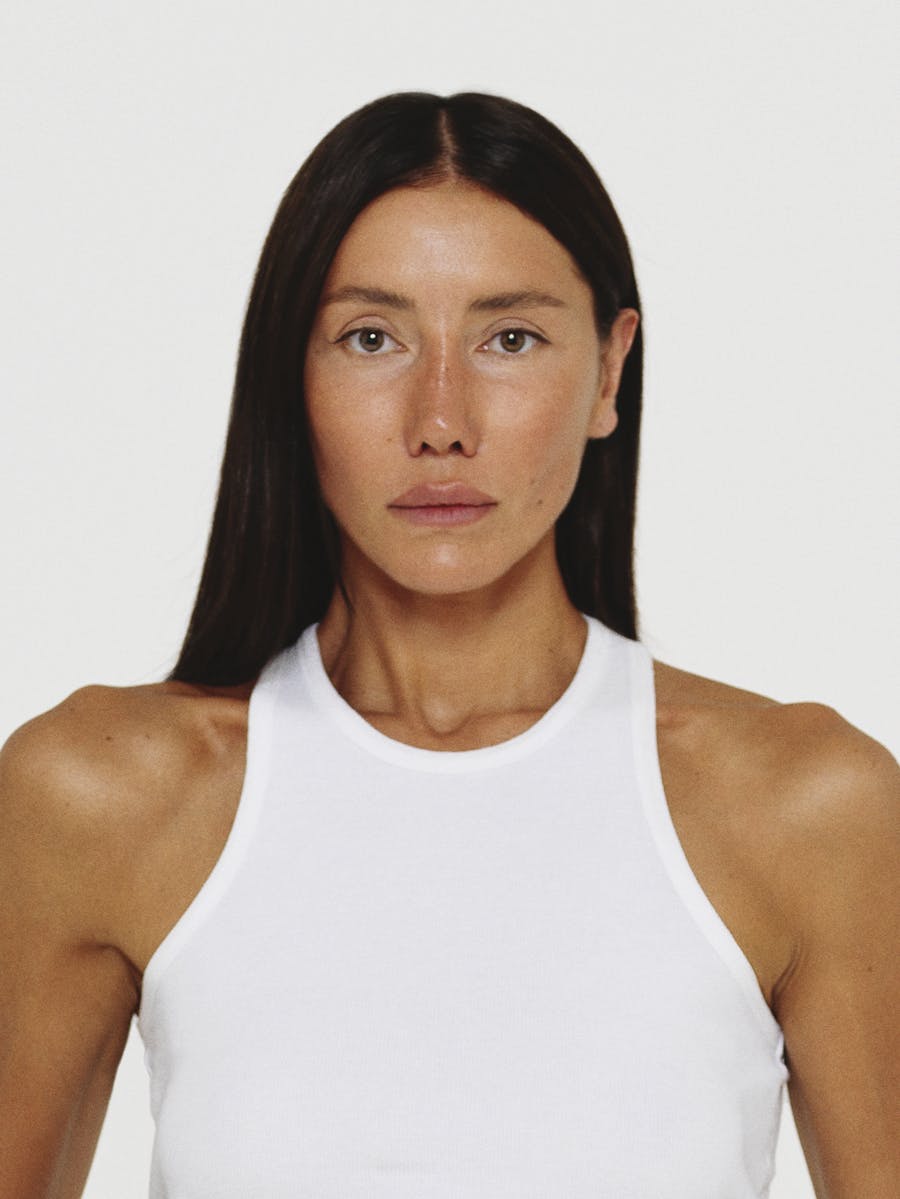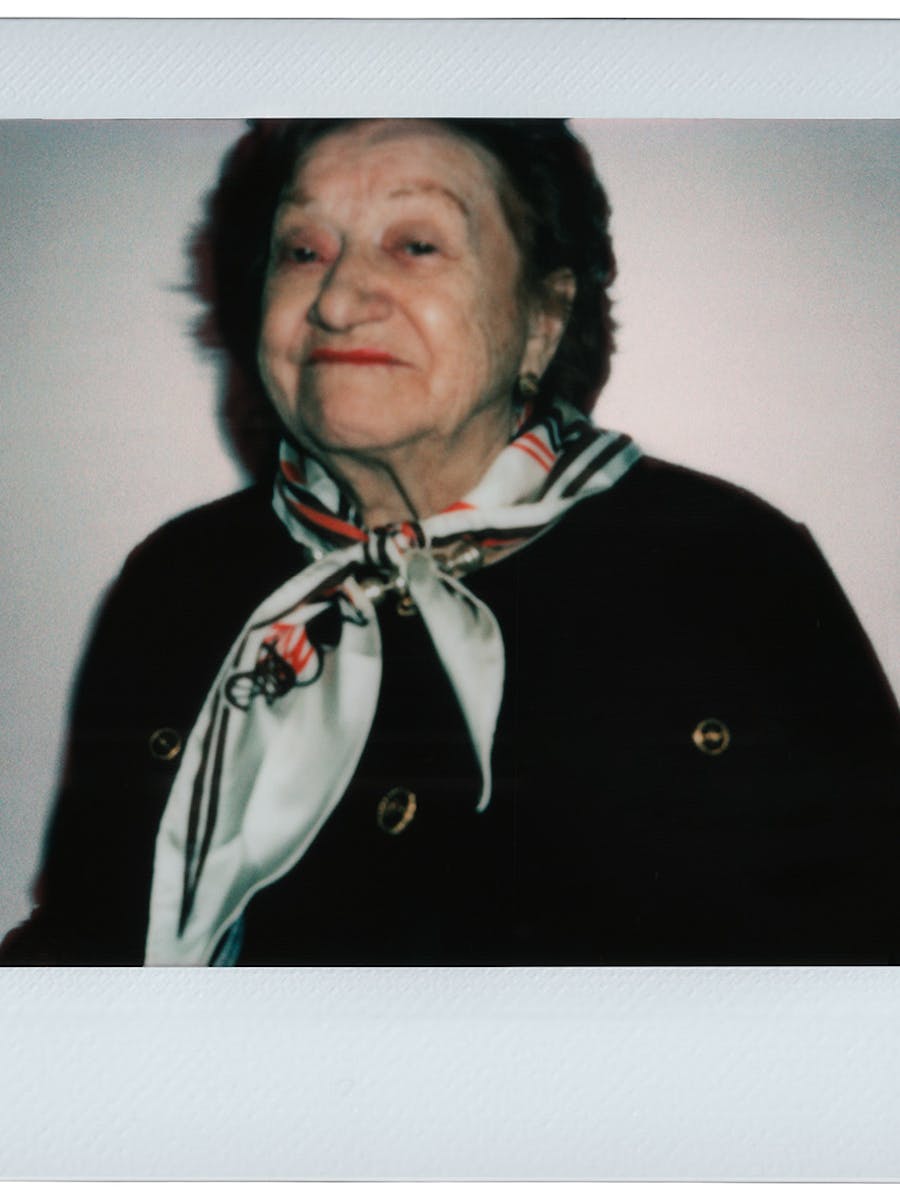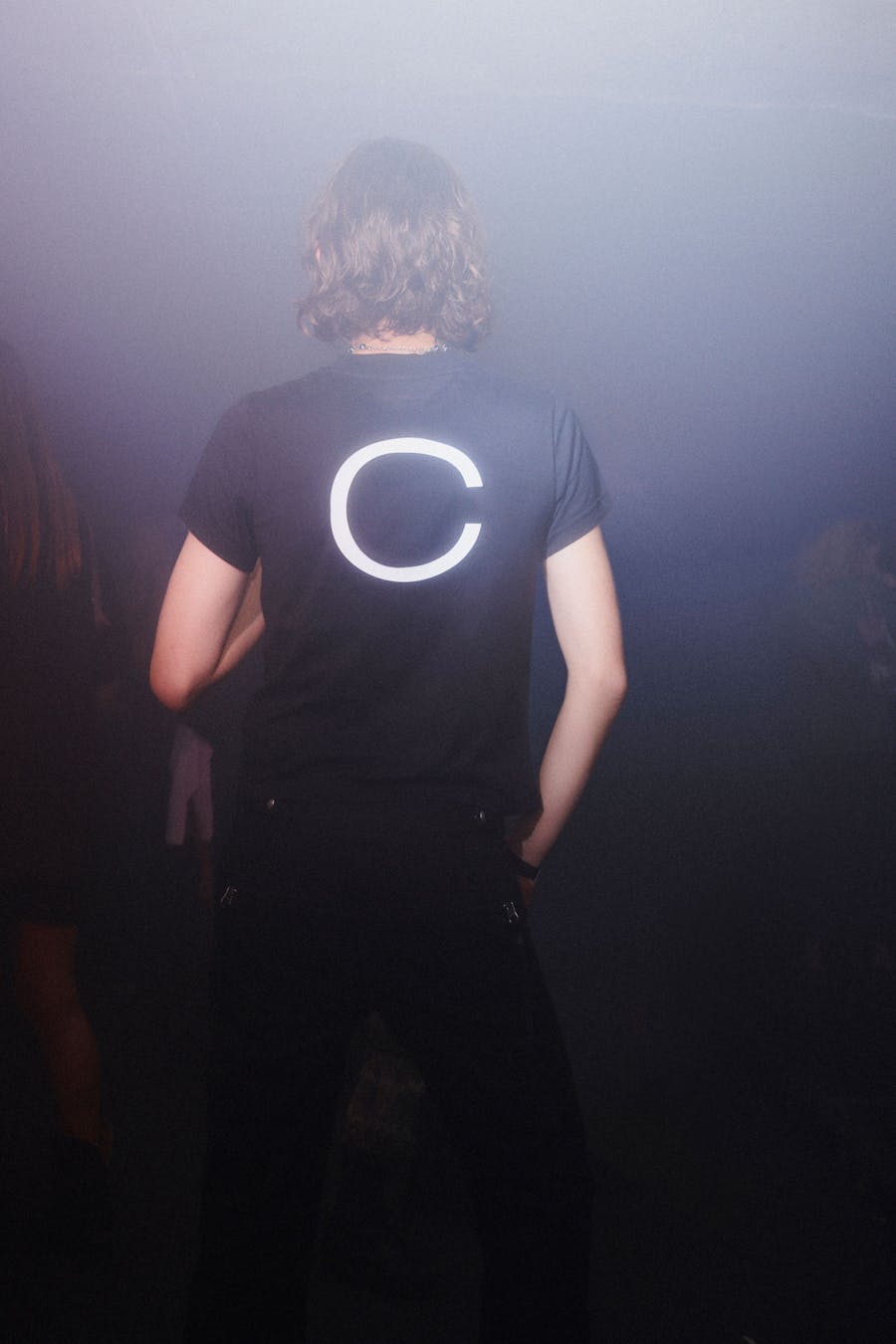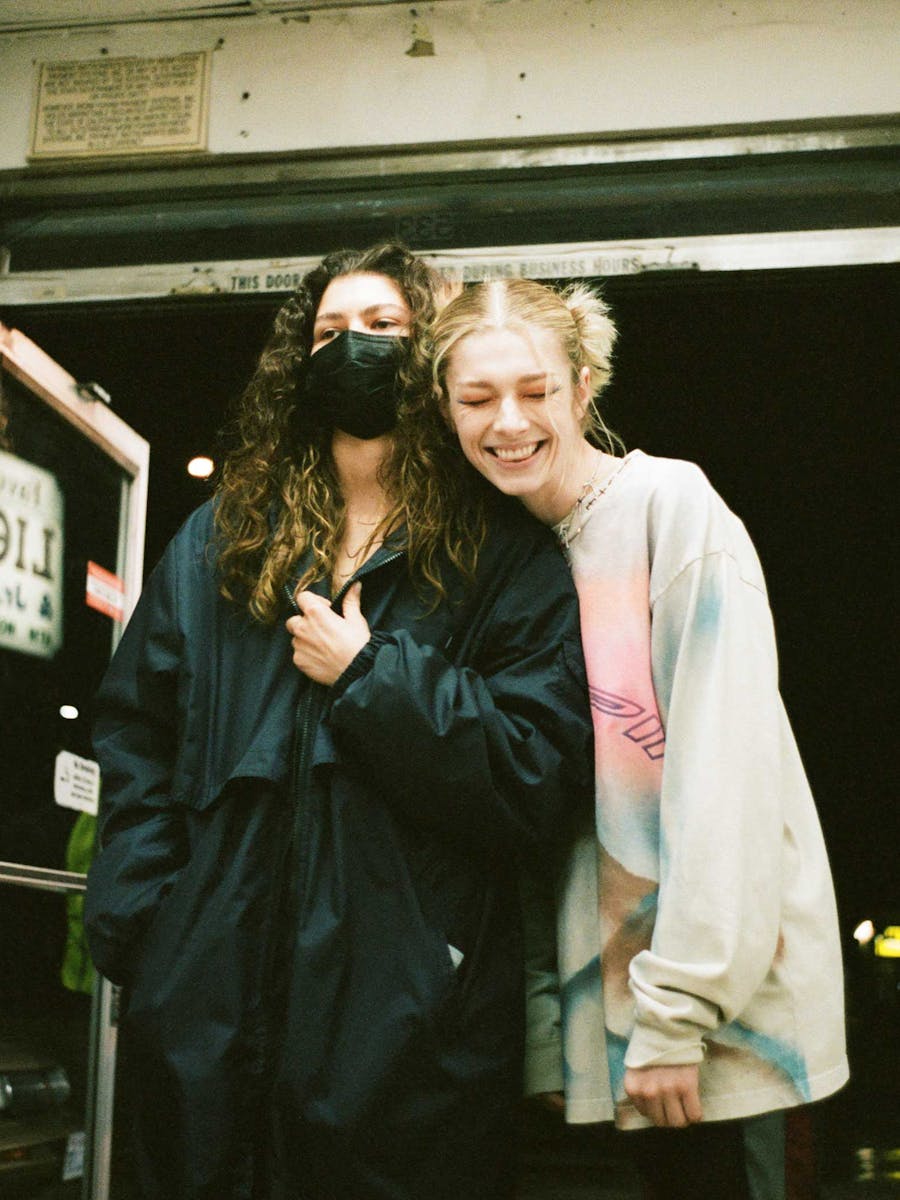Marine, Arthur and Jonathan. Three charismatic figures at the head of a unique dance troupe and, for the last four years, the Ballet National de Marseille. From (LA)HORDE, we of course know their vision of an intelligent and sensitive body, their taste for the collective, partying and techno, but also their passion for exploring multiple contemporary identities at the frontiers of the real and the virtual. Exhibition Magazine caught up with (LA)HORDE just a few days before the premiere of their new show Age of Content at the Théâtre du Chatelet and their New York odyssey, where they will be premiering their hit piece Room with a View with musician Rone.
Tell us about (LA)HORDE encounter.
Marine Brutti : It's quite original. With Jonathan, it was for the exam to enter at the HEAR (Haute École des Arts du Rhin).
Jonathan Debrouwer : It's a very selective exam, quite stressful, and I see this dark-haired girl smoking in the corner. I walked over to her to have a chat and I saw her waving at me without saying a word.
Marine Brutti : Yes, it's terrible when you tell it like that (laughs). In fact, I was going through a ritual to give me courage before the final test and I had to remain silent while smoking my last cigarette before going through. When I saw Jonathan coming towards me, I wanted to talk to him but I couldn't break that vow and bring myself bad luck. In the end, we were both selected and a few months later we found ourselves in the same group at school. I was finally able to explain to him what had happened !
A silent meeting is indeed original for (LA)HORDE. Then, you met Arthur later at a party.
Arthur Harel : Yes, we met at parties like Flash Cocotte or Possession at Club 0, very free queer parties in Paris in the 2010s. We listened to a lot of house, disco and techno and that brought us together very quickly.
Marine Brutti : The first time we saw Arthur outside of a party was at the Max Lindler cinema at a Harry Potter screening - Jonathan and I are fans - and we have hallucinated when we realised he hadn't seen the films. But since then we've made up for it.

Cinema is a major influence on your work, which is often very cinematic. What kind of films do you watch ?
(LA)HORDE : We're sci-fi fans ! But generally speaking, we often talk about films to create our shows. Lars Von Trier's Melancholia, which has an incredible theatre of images, often comes up in our discussions. But there's also the work of Paolo Sorrentino, the series The Last of Us or a long film like those by Matthew Barney. Our tastes are pretty eclectic.
In your new show Age of Content, you explore both physical and emotional reactions to the abundance of content and simultaneous realities we are confronted with. What were your sources of inspiration ?
Jonathan : Since we were very young, we've escaped through networks, video games, literature and films. These are the spaces that give us a window on the world, and we wanted to talk about the acceleration of the global multiverse. During Covid in particular, we heard so much about culture being non-essential, we really wanted to talk about its online representation, but also about the representation of bodies. Today, the multiverse has been democratised and is having an impact on our daily lives, in both good and bad ways. Age of Content is about the crisis we are going through with the multiverse, about the fact that we are increasingly connected but also increasingly self-centered, and the multiplicity of sources of information and reality can also restrict our freedoms.
Marine : In the show, we also want to showcase how dance is one of the last refuges, a zone in which the body is not used for utilitarian purposes. It's a cultural art form, an expression of virtuosity and technical skill that can convey emotions, thoughts and reflections. With Age of Content, we asked ourselves : are our avatars a reflection of our bodies, or is it the other way round ? We worked a lot with the dancers on the signature gesture of this piece.
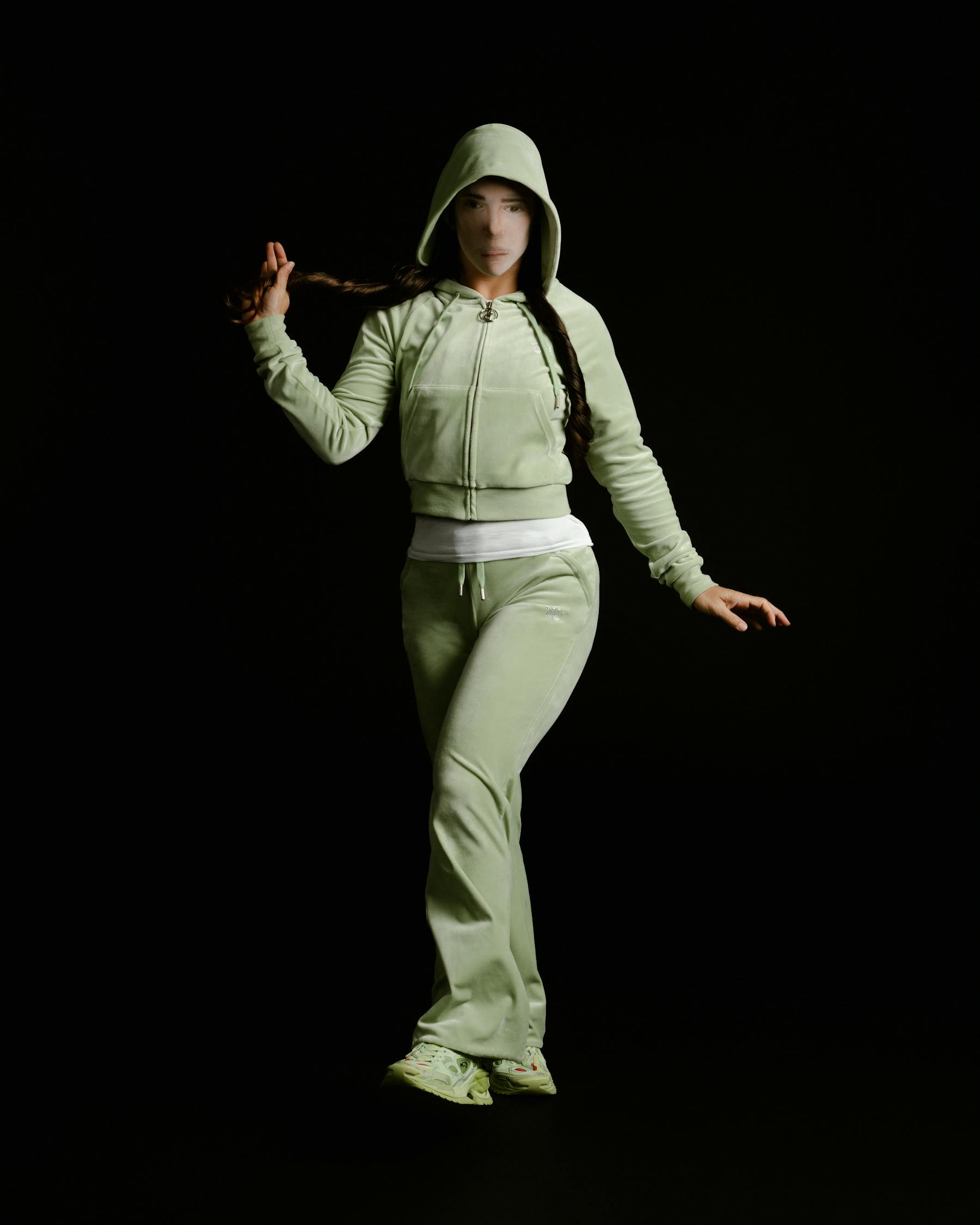
Tracksuits JUICY COUTURE BY SALOMÉ POLOUDENNY
Faceless masks BY SALOMÉ POLOUDENNY
And what about the techno, which is also very present in your work ?
(LA)HORDE : For us, techno is synonymous of both an artistic and a political scene, because it continues to exist in parts of the world that need to claim something and bring about certain revolutions through the body. At the moment, we're getting ready to present Marry Me in Bassiani again with traditional Georgian dancers, a piece we haven't performed for two and a half years. It is inspired by a major peaceful revolt that took place in the form of a rave over several months in Georgia. It was to free 200 people imprisoned following a military raid on the queer and techno club Bassiani, at a time when young people were trying to exist differently in alternative venues. Beyond tastes and aesthetics, techno is part of the history of revolutions in gender and society.
Is techno still very much in evidence in your new piece Age of Content ?
(LA)HORDE : For Marry Me in Bassiani, we worked with Sentimental Rave, a young DJ and friend, sampling traditional Georgian music to create pure, industrial techno. We always pay particular attention to the music, which also helps to create atmospheres. It's an essential part of (LA)HORDE. For Age of Content, we wanted to take a more cinematic approach, by painting a picture. We worked with Pierre Avia, a composer of music for images, focusing on cinema and series, and then we ended up with a large painting by Philip Glass. But it's true that for the first scene - in a Kim K style - we found a sound created by DJ Gabber Eleganza from the German label Never Sleep, one of the best-known figures in hardcore techno. Like a nod to our early days.
You love sci-fi and gaming, and your pieces often have a futuristic feel. How do you imagine the future ?
(LA)HORDE : We create systems of anticipation through our three eyes, but there is no particular desire to show a near future. Our writing reflects our very organic and intuitive sensations, which go hand in hand with the documentary and sociological work we do around a play. But our dramatic writing can sometimes, in spite of ourselves, predict extremely close states of the world, like it was for Room with the view. These are sensations and glimpses that we put, doors that we open like a psychoanalysis report in which we make highly referential associations in which we call on abstraction and the imagination. Then, it's up to the audience to interpret the show as they wish. By the way, the feedbacks we get on our shows are often very different - it's beyond us.
Tell us about your trio, how does it work ?
(LA)HORDE : It's very organic. For over ten years now, we've been constantly questioning ourselves and changing our methods. Respect and consent are at the heart of our values and our creative process. But we never shy away from discussion, confrontation or contradiction. On the contrary, we create a common collective memory by reading and sharing many references and cultivating our differences. It's a skilful blend of listening and pleasure. Whether on a film set, in an office or on stage, there are no rules or recipes. Our collaboration is heterarchical, we've trained ourselves and there's something very kind about it.
Arthur : At the moment, we're being followed by a filmmaker from France TV for a 52-minute film, and yesterday we had our final interview, and the journalist said to us: "It's incredible, you're in an extremely meticulous daily chaos". That's what (LA)HORDE is all about, having the illusion of controlling chaos. We're not control freaks, but we're very rigorous. A lot of people think that everything we do is very calculated, but what really counts is collaboration and respect for each other and the pleasure of creating together.
Was there a turning point in your career when everything changed ?
(LA)HORDE : At the moment, we're still experiencing a turning point. It's going beyond us, we're sensing constantly changing views, perceptions and levels of visibility. We need to keep a cool head and continue to protect ourselves to maintain the pleasure we get from working together. We're moving forward without question, and it's not just in terms of visibility and success that we experience major turning points. The most recent turning point was our appointment to the Ballet National de Marseille, which gave our work greater scope: going from a team of ten freelancers to around fifty was a huge opportunity and a real privilege.
Tell us about the Ballet National de Marseille dance company and its 24 dancers from a wide variety of backgrounds.
(LA)HORDE : When we arrived in 2019, there were 8 dancers left and we were able to recruit around ten. When we arrived, we wrote a manifesto so that we could be read and heard as contemporary artists and so that people would feel that we were involved. In this manifesto, we examined the idea of community. We asked ourselves: what are we going to say with permanent dancers over ten years ? The solution is for it to be an ephemeral international community. For us, dance is a meaningful place, a universal language, but not a universalist one. With this in mind, we have opened auditions for the Ballet National de Marseille all over the world in order to recruit performers and give continuity to our work. Who are they ? What do they have to say ? From there, we create fiction.
You're also often seen at Fashion Week shows, and you've already collaborated with a number of designers including Glenn Martens and Riccardo Tisci (Burberry), with whom you came up with Open Spaces, an incredible aerial ballet. What is your relationship with fashion and clothing ?
(LA)HORDE : Fashion is an obvious place for collaboration because the designers we work with - Glenn Martens, Isabel Marant, Riccardo Tisci and others - are artists who think of clothing as an affirmation of plural identities. As we've seen in the history of fashion, the industry has to question itself, but clothing and what it has symbolised in terms of revolution in different communities is undeniable. As a choreographer, it's one of the most important and complex elements to master. If you put a pair of trousers, a skirt or a dress on a dancer, if you choose one aesthetic rather than another, you're saying completely different things.
What about New York ? In a few days, you'll be presenting Room With a View for the first time as part of the Dance Reflection Van Cleef & Arpel festival ?
(LA)HORDE : It's very exciting, it's our first time in New York. It's amazing ! It's almost a joke to be on the cover of the New York Times. We're really looking forward to presenting Room With a View there and the following week, one of the ballet's main pieces since our arrival with Rone and the vision of a programme with ultra-contemporary pieces like those from (LA)HORDE and the final tableau from Age of Content, but also one by Lucinda Childs. How to differentiate from other ballets ? When the bodies of the BNM perform ballets like (LA)HORDE and Lucinda's Concerto or Tempo Vicino, there is a real satisfaction in seeing that the most classical or post-modern forms can be performed by bodies of today and tell a different story.
After so much success and before the assault on New York, what can we wish you for the future ?
Arthur : I'm thinking like Santa's list. I don't know, but maybe that's what drives us in the end. With Marine and Jonathan, we go where desire takes us. So, maybe we should continue to have the desire to create together. We want to keep letting ourselves be surprised.


